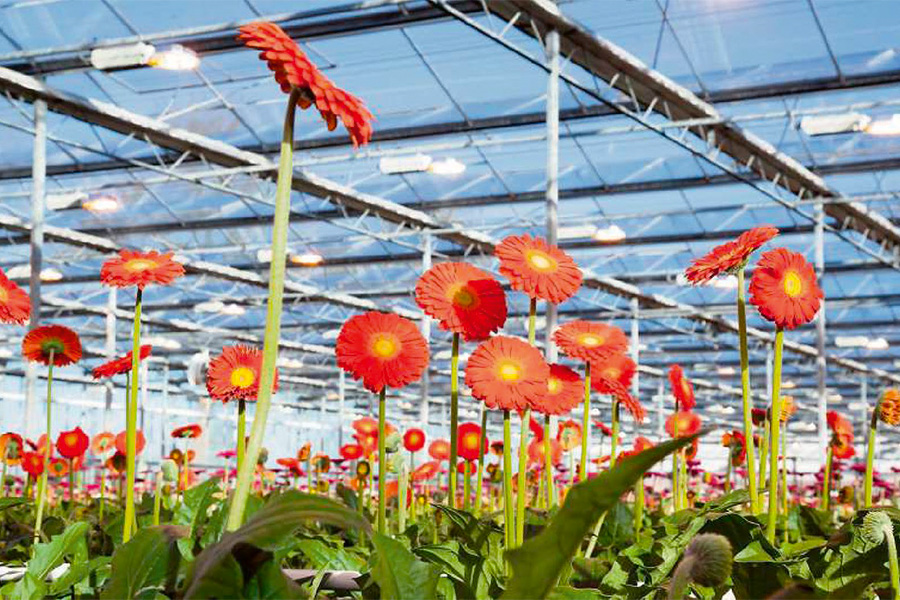- English

Coffee?” Van der Starre fills a blue bottle with tap water and turns an ionizer on top of it. “This way you get the best water available.” He empties the bottle into the coffee maker. While enjoying an espresso, the director-inventor talks about his water ionizer.
Greenhouse growers usually water their crops in their greenhouses using drip irrigation, sprinkling or an ebb and flow system. That water contains liquid fertilizers and sometimes pesticides. The excess water is then collected in a silo and reused, Van der Starre explains the situation.
Because recirculated water chemicals and germs may contain, it must not be discharged into a ditch or watercourse.
And it is unsuitable for reuse without processing. Chlorine or hydrogen peroxide is usually added to break down pesticide residues and kill harmful bacteria and algae. But these disinfectants also inhibit the root growth of the plants.
“Horticulture must get rid of those chemicals,” says Van der Starre. Over the past five years he developed a cheap water ionizer. He grabs one. The device looks simple. There is a titanium coil between two fiberglass rings. It does the work. A submersible pump pumps the water through it.„
Vague
The ionizer generates static electricity. When water flows through it, a vortex, a kind of whirlpool, is created around the spiral. The rings release negatively charged ions into the water. A kind of ‘nanobubble environment’ is created in that water with free hydrogen and oxygen. The water therefore becomes energetically pure and vitalized. The so-called bovis value (a term from the alternative circuit, BvdD) for the
The energy value of water increases from 1000 to approx 350,000. Do you think that sounds strange? Me too, but it works.”
Van der Starre stands up: “Any coffee?” And he continues while enjoying another espresso:
“That combination of oxygen and ions breaks down all the junk, including algae, mold spores, viruses and bacteria.” Van der Starre places a stack of reports on the table. “You will receive it straight into your mailbox.”
Repeated laboratory tests by Normec Certification in Utrecht turned out well. Almost all germs are gone from the ionized recirculation water.
For example, SGS-CSTC Standards Technical Services in Shanghai and TÜV Rheinland found no chemical residues in ionized recirculation water. Freshwater’s website gives the impression that Wageningen University & Research and TNO are also involved in this invention, but this only concerns the air ionization from Freshlight.
Van der Starre is so confident in his invention that he suggested a gardener drink a cup of water from the waste water silo. “”Are you crazy?” the gardener responded, “that water is full of chemical junk.” I then said: “But not anymore.”
Sceptical
Van der Starre’s partner Hans Smaal, owner of a water consultancy firm and previously owner of an orchid nursery, knows greenhouse horticulture inside out. He goes public with Freshwater’s invention. “Growers usually react skeptically when I arrive with a device without a plug. Their first reaction is: “How is that possible?””
Smaal then suggests testing the device. “Then it turns out that it works. The algae pressure decreases, the biofilm in the pipes disappears, and with it the biofilm.
Pathogens such as fusarium and botyris also disappear. For the gardeners, clean water from the silos is the first benefit.”
About thirty Dutch greenhouse horticulture companies now use the water ionizer. One of them is Vollering Hydrangea’s in Berkel and Rodenrijs. When asked, owner Arjen Offermans indicates that the experiences with the ionizer be “very positive.” “We had a basin with a lot of algae and dirt. Since the pump with the spiral floats in it, the water is much cleaner. We have now also applied this in the second basin. The water is so clean that we no longer need to chemically clean it. Moreover, our hydrangeas grow noticeably better.”
The Dutch gardeners are not the only ones who use the Freshwater water ionizer. Van der Starre exports its ionizer in all shapes and sizes all over the world. “In Switzerland, mountain farmers use it to make drinking water from mountain water. That is dirtier than you would think due to air pollution. I developed an ionizer with a solar-powered pump for them.”
How many ionization devices Freshwater sells on an annual basis?
“Just keep in mind that we are the market leader in the Netherlands. The grower will have recouped his investment within a year.”
The ionizer can be used anywhere “where water and food come together,” Van der Starre explains. “We started with air ionization in chicken stables – later also in industrial halls against dust and in churches against the coronavirus. We have also started water ionization at a poultry farmer, who wanted clean water for his chickens. Those chickens peck at the shit all day long. Thereafter they drink from such a nipple. And the E. coli bacteria from chicken feces then spread throughout the entire water supply. Now that they drink ionized water, many fewer go dead.
More information: fresh-water.eu